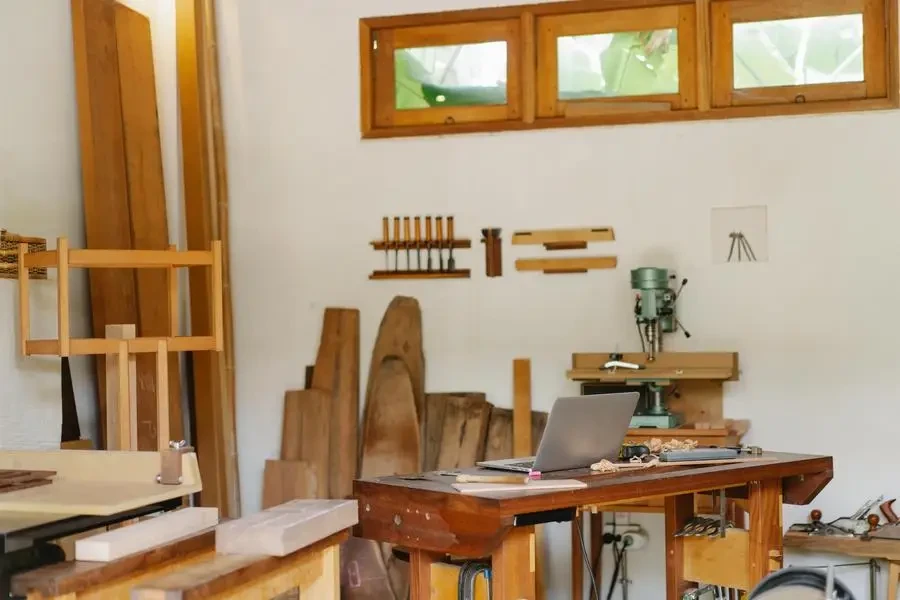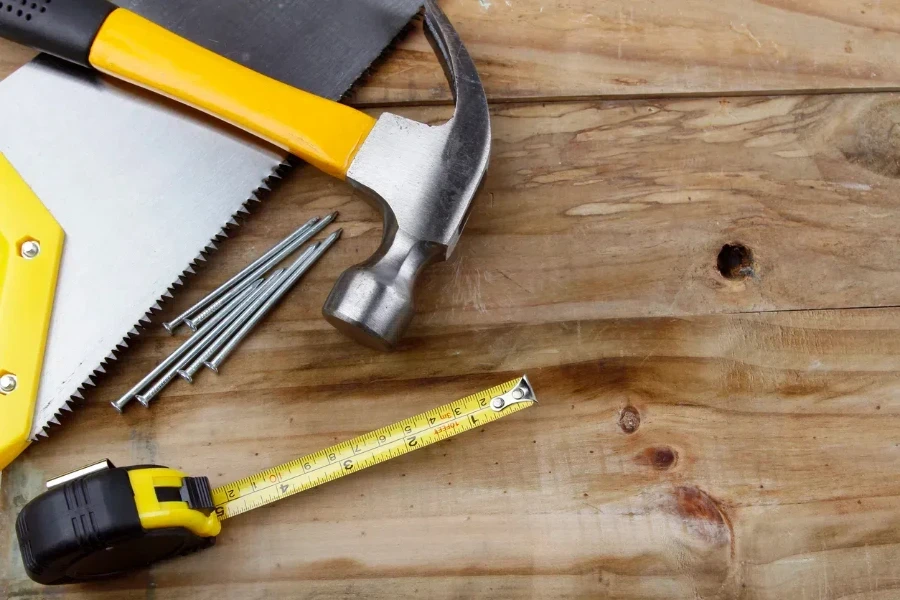In 2025, the woodworking machinery market continues to expand rapidly, driven by technological advancements and a rising interest in DIY projects. This article provides an in-depth analysis of key factors to consider when selecting a wood workbench, offering valuable insights for professional buyers to make informed decisions and enhance their product offerings.
İçindekiler:
– Global Market Overview of Wood Workbenches
– Detailed Insights and Analysis of the Wood Workbench Market
– Key Factors When Selecting a Wood Workbench
– Exploring the Benefits of Custom-Built Wood Workbenches
– Latest Technology Features in Wood Workbenches
– Ensuring Safety and Compliance with Wood Workbenches
– The Role of Wood Workbenches in Enhancing Productivity
– Temel Bilgileri Özetlemek
Global Market Overview of Wood Workbenches

The global woodworking machinery market, including wood workbenches, was worth approximately USD 5.2 billion in 2023. This market is projected to reach USD 6.8 billion by 2030, reflecting a compound annual growth rate (CAGR) of 3.9% from 2023 to 2030. The woodworking industry has grown significantly due to technological advancements, increased demand for precision in wood products, and a rise in DIY woodworking projects. In 2023, the U.S. market alone was worth approximately USD 1.1 billion, while China is expected to grow at an impressive CAGR of 6.5%, reaching USD 1.4 billion by 2030. Other key regions contributing to the market include Japan, Canada, Germany, and the Asia-Pacific region.
The overall wood market is expected to grow at a CAGR of 1.16% from 2024 to 2029. The number of enterprises engaged in the wood market is expected to be 0.34 million in 2024, with an enterprise density of 44. Employment in the wood market is projected to reach 4.74 million, with a labor productivity rate of USD 37.6k in 2024. These statistics highlight the significant economic impact and employment opportunities provided by the wood market globally.
Detailed Insights and Analysis of the Wood Workbench Market

The wood workbench market is influenced by several factors, including technological advancements, consumer behavior shifts, and increased investment in automation. The development of computer numerical control (CNC) woodworking machines has revolutionized the industry by offering higher precision and efficiency compared to traditional methods. CNC machines enable the creation of intricate and detailed woodworking projects, which was previously unattainable with manual methods. The integration of smart manufacturing technologies, such as high-precision perception and unmanned operation capabilities, has further enhanced productivity and reduced labor costs.
Key performance benchmarks in the wood workbench market include durability, stability, and usability. High-quality wood workbenches are designed to withstand heavy use, providing a stable surface for various woodworking tasks. Market share dynamics indicate that established brands like Altendorf GmbH, Biesse Group, and HOMAG Group dominate the market due to their reputation for quality and innovation. Economic influences affecting the market include fluctuations in raw material prices and the impact of geopolitical events on supply chains.
Consumer behavior has shifted towards DIY woodworking projects, driven by the popularity of home improvement shows and online tutorials. This trend has increased the demand for affordable and high-quality wood workbenches. Distribution channel preferences have also evolved, with online sales gaining traction due to the convenience and variety offered. Innovations in the market include modular workbench designs that allow for customization and flexibility, catering to the diverse needs of consumers.
The product lifecycle stages of wood workbenches involve the introduction of new designs, growth in demand, maturity in market penetration, and eventual decline as new technologies emerge. Digitalization has played a crucial role in enhancing the design and manufacturing processes, enabling manufacturers to produce workbenches with higher precision and efficiency. Social trends, such as the emphasis on sustainability and eco-friendly products, have influenced consumer preferences, leading to increased demand for workbenches made from sustainably sourced wood.
Customer pain points in the wood workbench market include the need for durable and stable workbenches that can withstand heavy use and provide a stable surface for various tasks. Brand positioning strategies involve highlighting the quality, durability, and innovation of products to differentiate from competitors. Differentiation strategies include offering customizable workbench designs, incorporating advanced features such as built-in storage and adjustable heights, and providing excellent customer service.
Niche markets within the wood workbench industry include specialized workbenches for professional woodworkers, hobbyists, and educational institutions. These niche markets require specific features and designs to cater to their unique needs, such as heavy-duty workbenches for professional use and compact, portable workbenches for hobbyists.
Key Factors When Selecting a Wood Workbench

When choosing a wood workbench, consider several key factors to ensure it meets your needs. These include the type of wood, design and functionality, dimensions and load capacity, available accessories, and price range. Each element contributes to the workbench’s utility, durability, and safety.
Type of Wood Used
The wood type is crucial for a workbench’s durability and performance. Hardwoods like maple and beech are preferred for their strength and resistance to wear. Maple’s fine grain and hardness make it ideal for heavy-duty workbenches. Beech offers excellent shock resistance and is often used in high-quality workbenches.
Softwoods such as pine and fir are used in budget-friendly options. They are lighter and easier to work with but may not be as durable as hardwoods. Choose a wood type based on the demands of your projects.
Tasarım ve İşlevsellik
Design and functionality determine a workbench’s suitability for various tasks. A good workbench should feature adjustable height, built-in storage, and a stable work surface. Adjustable height improves ergonomics, while storage compartments keep tools organized. Integrated vices and clamps are essential for securing workpieces. A stable work surface ensures the bench does not wobble during use.
Boyutlar ve Yük Kapasitesi
Dimensions and load capacity affect a workbench’s usability. Workbenches vary in size, typically ranging from 48 to 96 inches in length and 24 to 36 inches in width. Adjustable height usually ranges from 30 to 42 inches. Load capacity indicates the maximum weight the bench can support. Industrial workbenches may support over 1,000 pounds, while home models might support around 500 pounds. Ensure the dimensions and load capacity suit your projects.
Mevcut Aksesuarlar
Accessories enhance a workbench’s functionality. Common accessories include vices, clamps, power strips, and lighting. Vices and clamps hold workpieces securely, while power strips provide convenient access to outlets. Good lighting reduces eye strain and improves accuracy. Some workbenches offer modular accessories for additional storage and customization.
Fiyat Aralığı ve Bütçe
Workbench prices vary based on materials, design, and features. Basic models may cost around $100, while high-end workbenches can exceed $1,000. Consider the long-term value and how the workbench meets your needs. Investing in a high-quality workbench can save money over time by reducing the need for repairs or replacements. Evaluate your needs and budget to find a balance between cost and quality.
Exploring the Benefits of Custom-Built Wood Workbenches

Custom-built wood workbenches offer several advantages. Tailoring the design to specific needs optimizes workspace efficiency and comfort. Custom workbenches can be built to exact dimensions, ensuring a perfect fit and accommodating unique workflow requirements.
One primary benefit is choosing materials that meet specific durability and aesthetic preferences. Users can select from various hardwoods, softwoods, and composite materials. This flexibility allows for a workbench that performs well and complements the workspace design.
Custom workbenches also allow for specialized features and accessories. Users can add custom storage, integrated dust collection systems, and specialized lighting. This customization leads to a more efficient and productive workspace.
Latest Technology Features in Wood Workbenches

Advanced technology in wood workbenches has revolutionized project approaches. Modern workbenches often include smart features like digital measuring tools, integrated power management, and connectivity options.
Digital measuring tools, such as laser systems and digital calipers, provide precise measurements, reducing errors. These tools can be integrated into the workbench for seamless use.
Integrated power management systems offer convenient access to outlets and USB ports, allowing users to power multiple tools. Wireless charging pads ensure devices are always ready. Connectivity options like Bluetooth and Wi-Fi enable remote control and monitoring of tools.
Ensuring Safety and Compliance with Wood Workbenches

Safety is crucial when selecting and using wood workbenches. High-quality workbenches should comply with industry safety standards like BS EN 13150 and DIN EN 13150. These standards ensure a safe working environment.
Workbenches should be stable and durable to prevent tipping or collapsing. Features like non-slip feet, secure locking mechanisms, and reinforced joints enhance safety. Workbenches should also be free from sharp edges.
Users should follow best practices for safety, including wearing appropriate PPE and maintaining a well-lit, clutter-free workspace. Regular maintenance and inspection are essential to address potential hazards.
The Role of Wood Workbenches in Enhancing Productivity

Wood workbenches enhance productivity by providing a stable and organized workspace. A well-designed workbench allows for efficient and accurate task performance. Built-in storage, adjustable height, and integrated tool holders contribute to organization and functionality.
An organized workbench reduces downtime by keeping tools and materials easily accessible. Adjustable height improves ergonomics, reducing strain and fatigue. Advanced technology features, like digital measuring tools and power management systems, streamline workflows and improve accuracy, leading to higher-quality results.
Temelleri Tamamlamak
Selecting the right wood workbench involves considering factors like wood type, design, dimensions, accessories, and budget. Custom-built workbenches offer tailored designs and specialized features, while modern technology enhances functionality and productivity. Ensuring safety and compliance with industry standards is crucial. By evaluating these factors, users can choose a workbench that meets their needs and enhances productivity.




